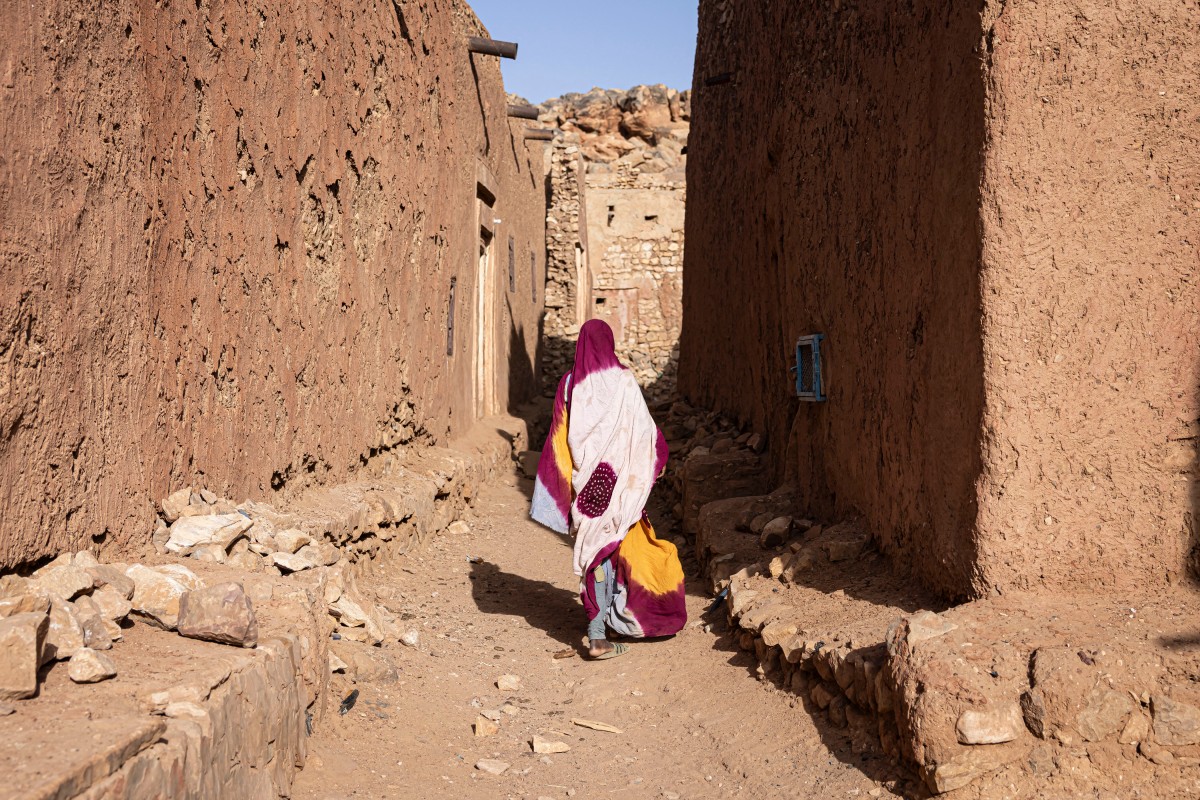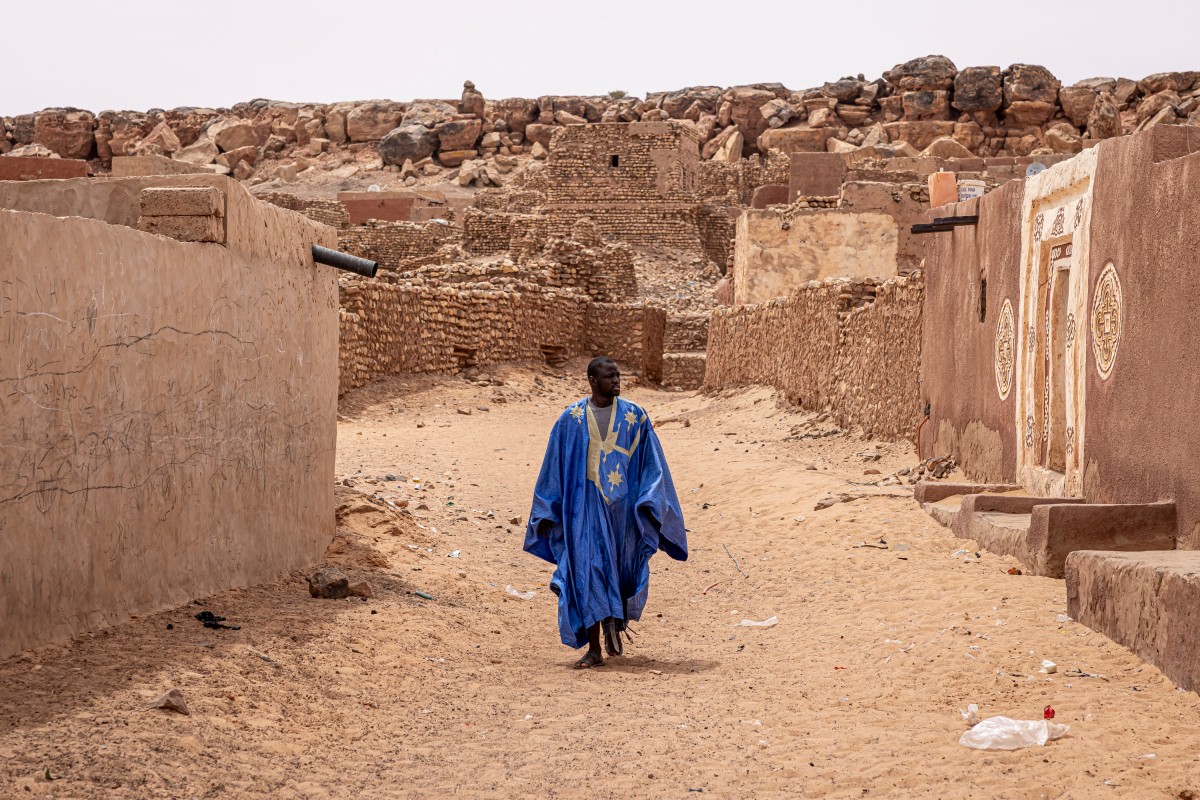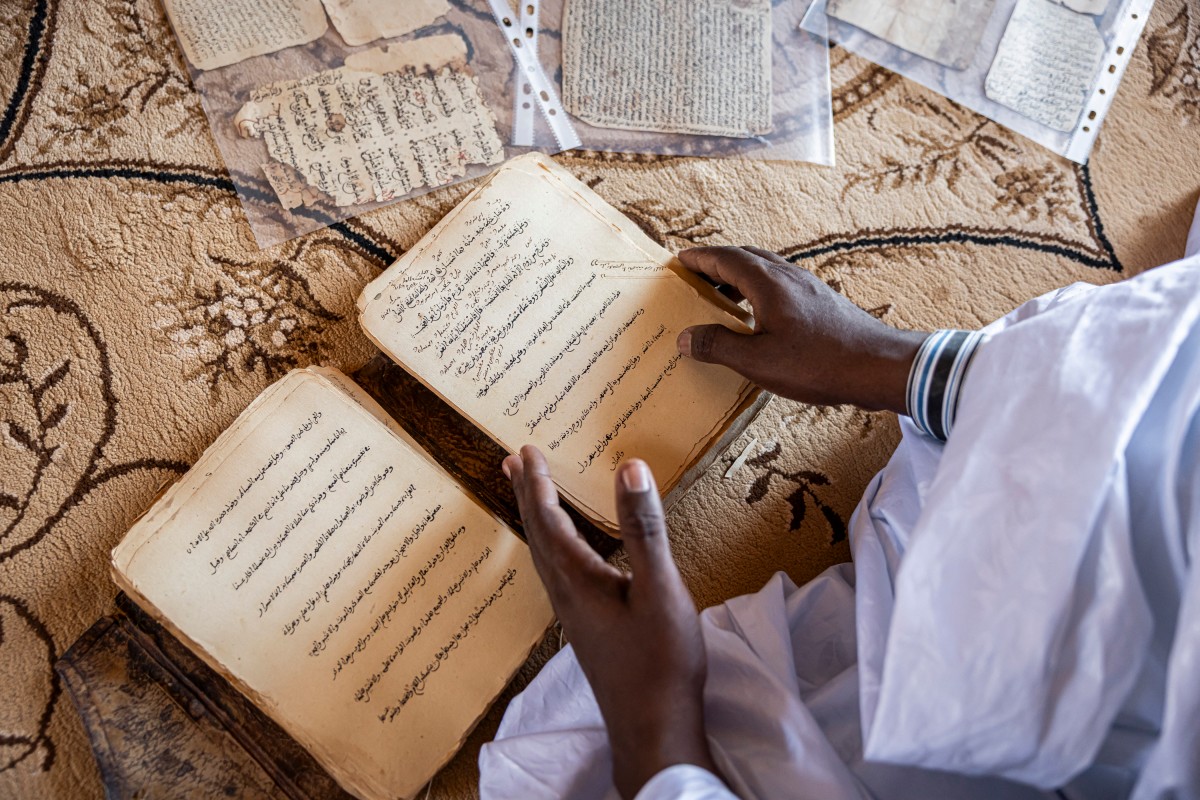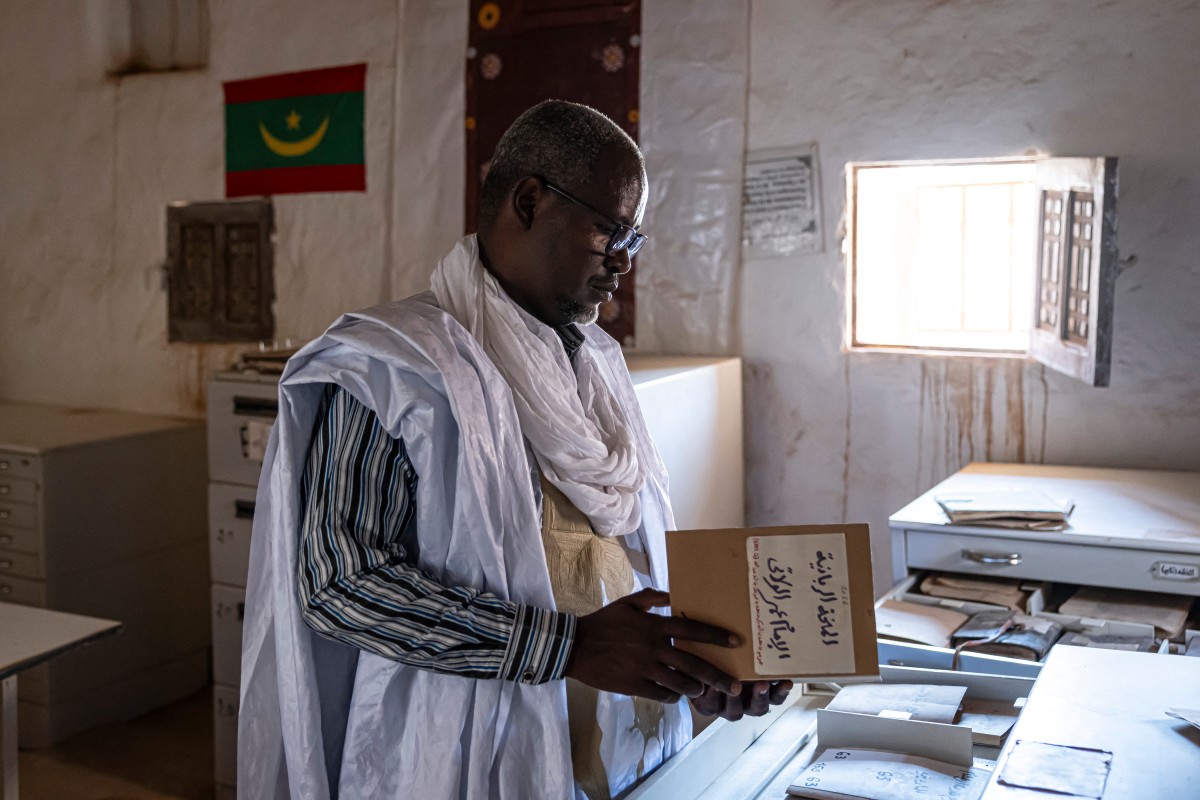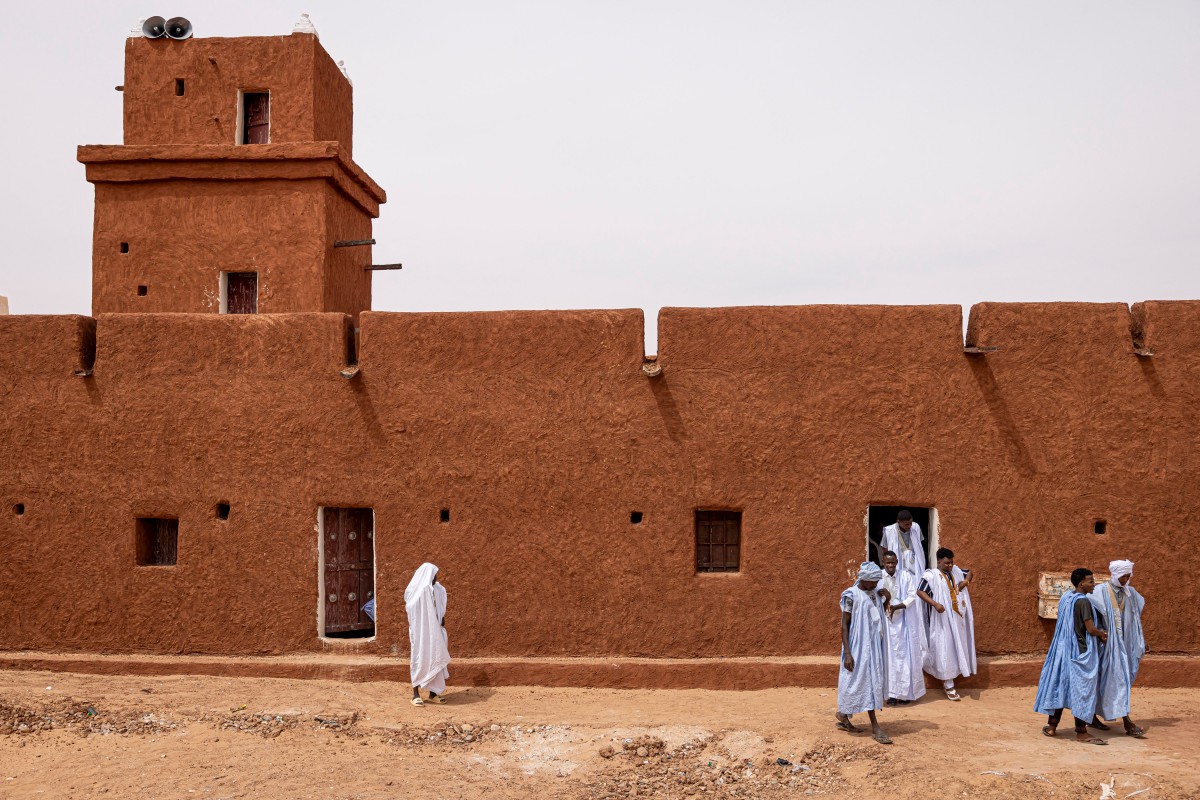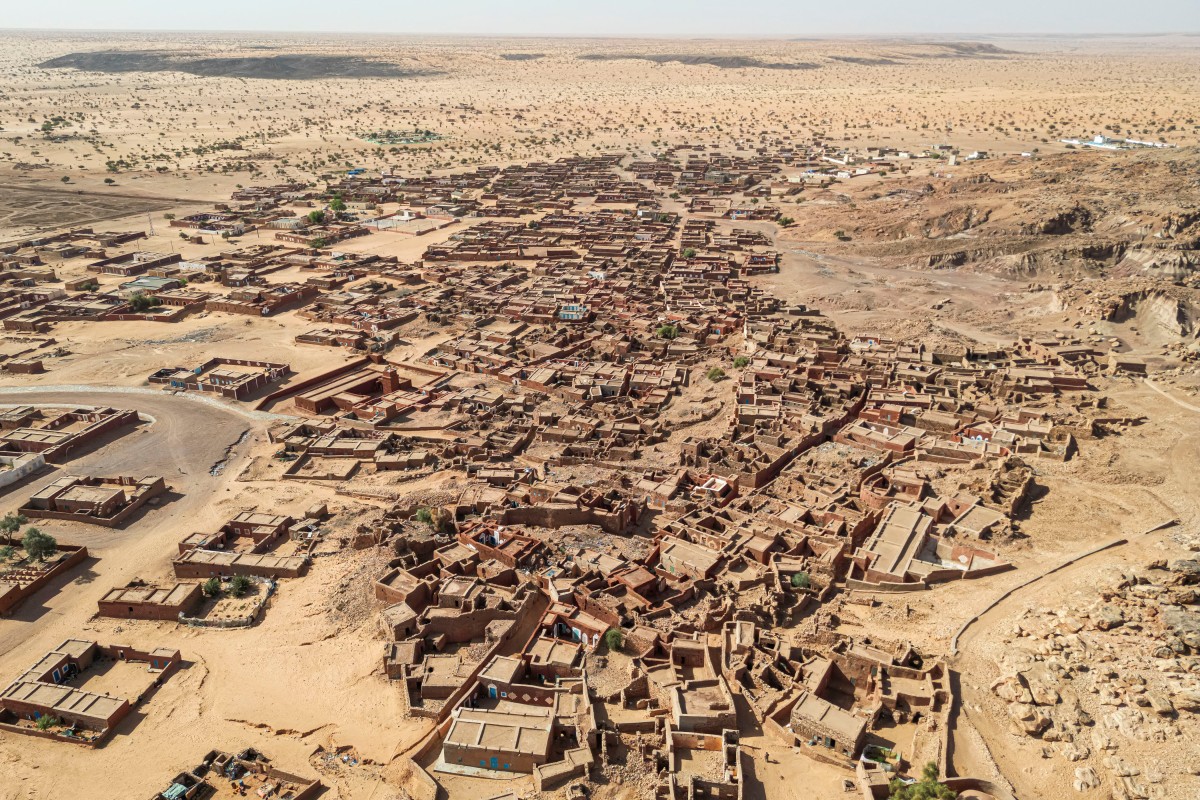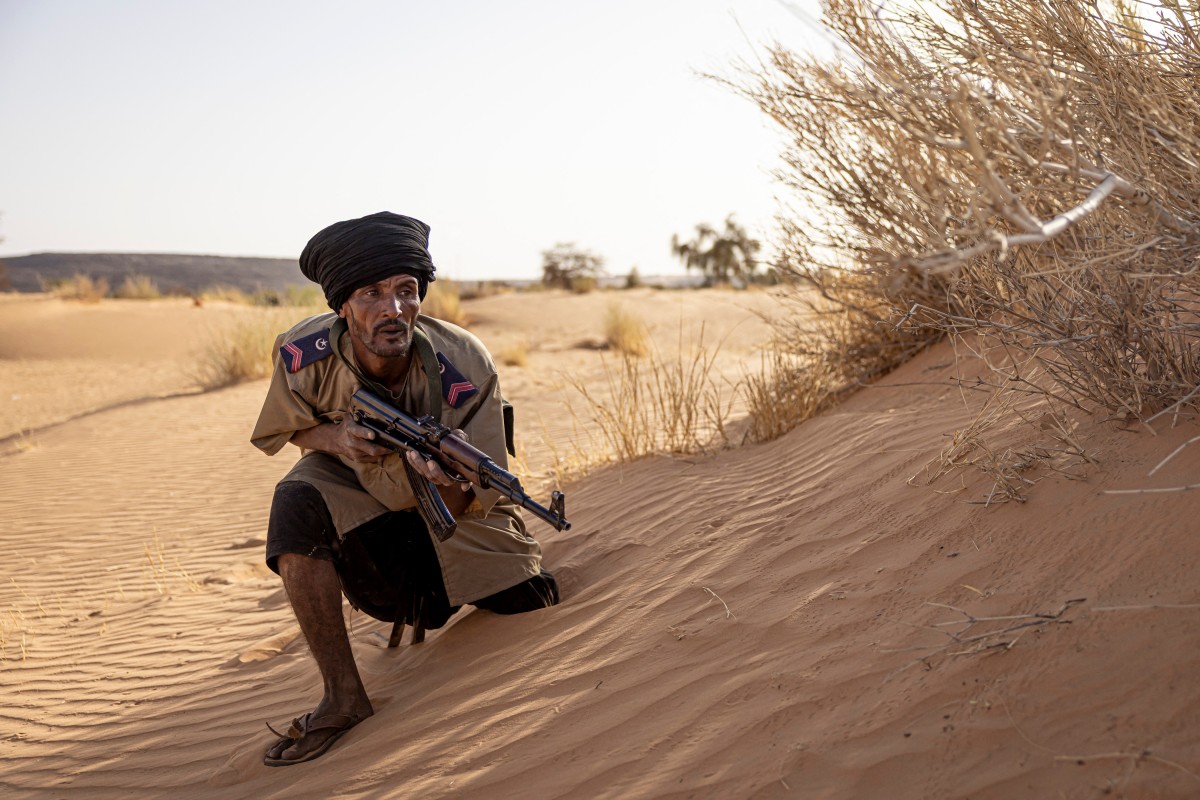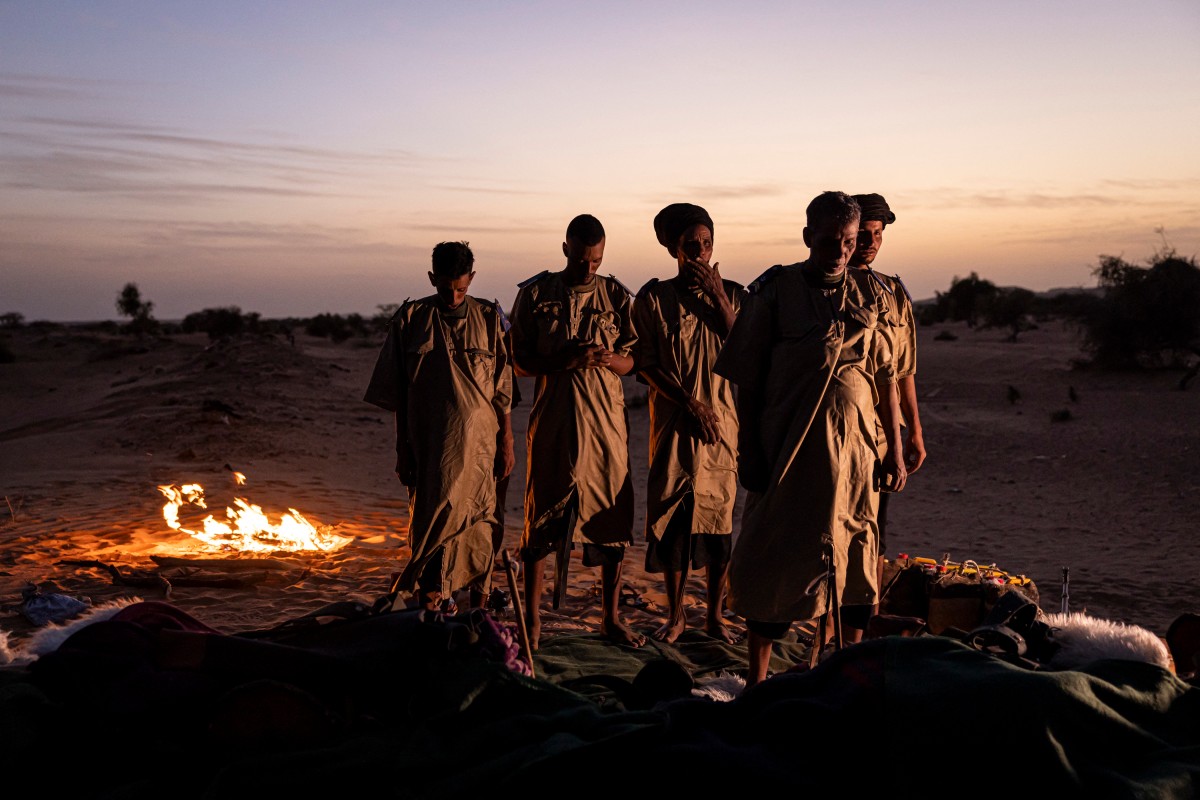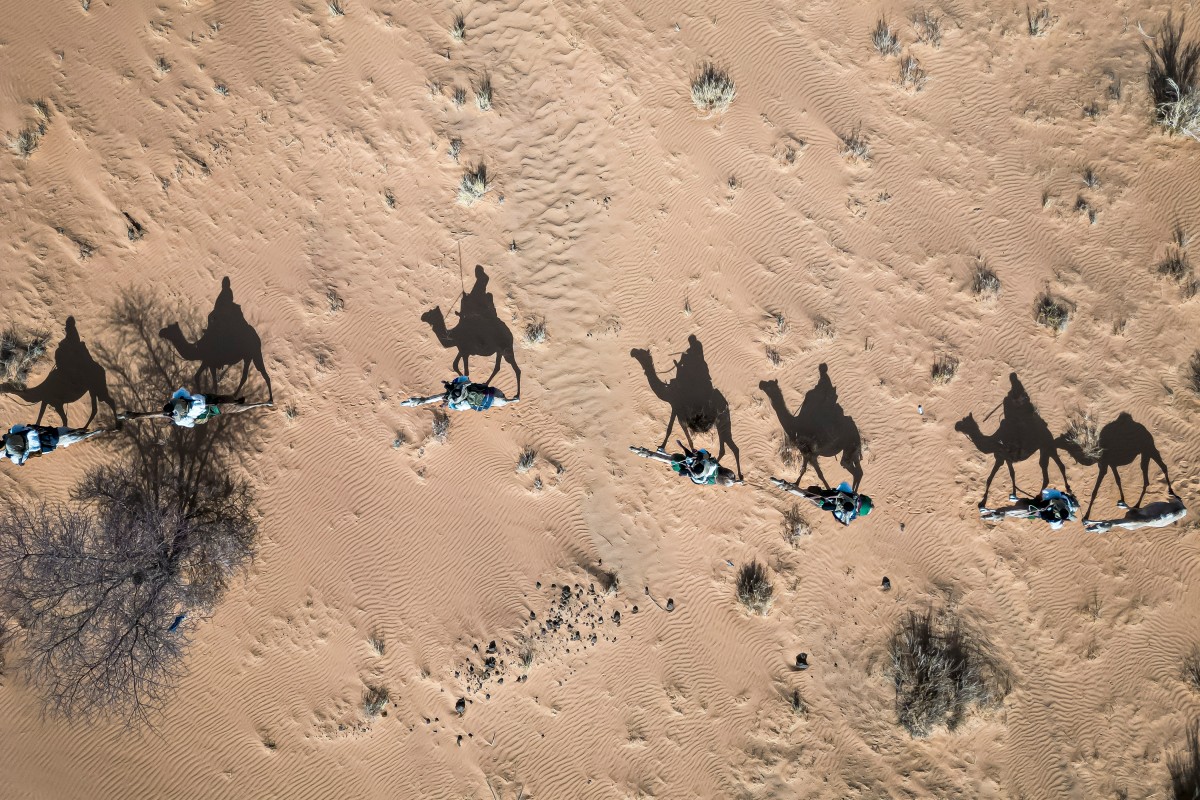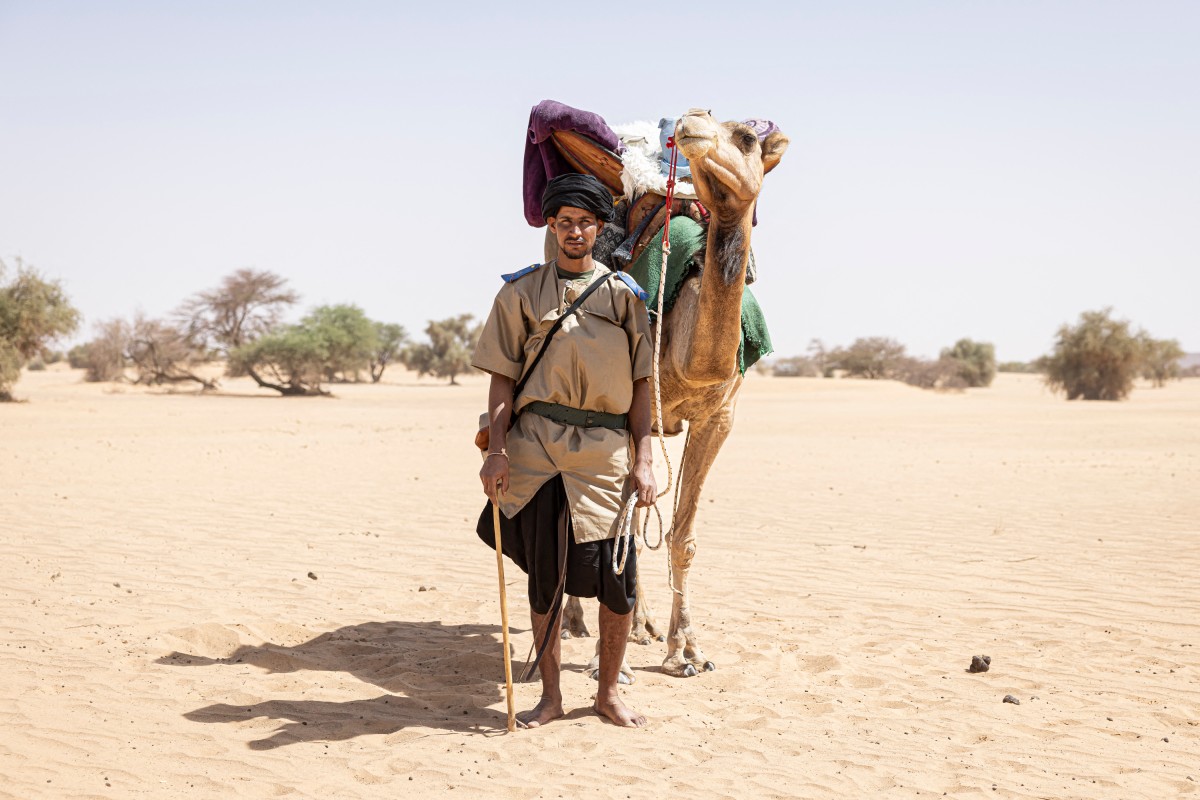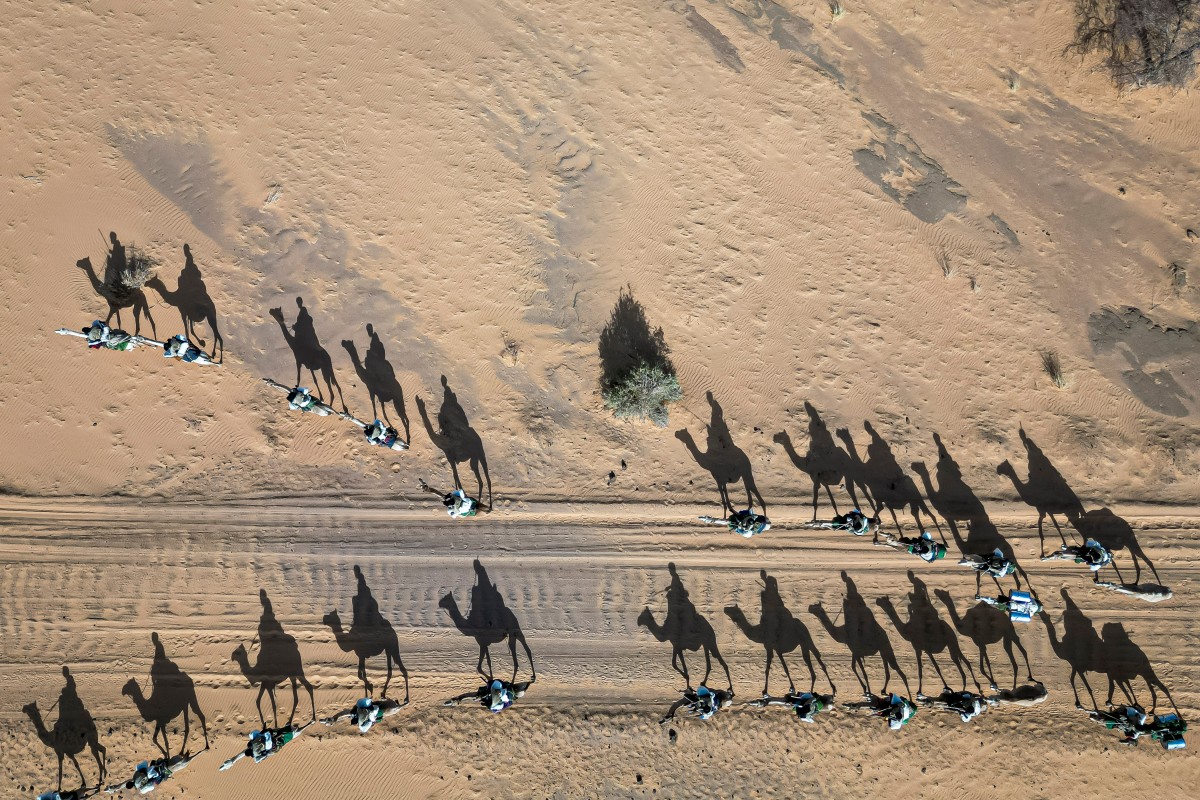A city battered by the desert, considered an architectural treasure trove housing thousands of centuries-old manuscripts preserved by local families. Soldiers perched on camels, Kalashnikovs slung over their shoulders and black turbans wrapped around their heads. In April 2025, an AFP multimedia team travelled to eastern Mauritania, visiting the ancient city of Oualata to report on the Ksour, desert cities under threat. Then after hours of travel into the depths of the desert, a meeting with the ‘Méhariste’ camel-mounted guards.
These stories required months of preparation and are exceptional not just for the stunning images, but also the rare access. Mauritania is a difficult country to report on due to its very strict security regime. Many embassies advise against travel to some parts of the country due to the threat of jihadist groups.
While jihadist attacks undermine the Sahel from Mali to Lake Chad, Mauritania stands out for its stability. This predominantly desert West African country does however share 2,200 kilometers of porous and poorly defined border with Mali, which is grappling with a jihadist insurgency. So the jihadist threat looms here, and caution is essential. Many countries “formally advise” against travelling to the entire eastern part of Mauritania. Few international media venture there. Despite controlled access to the country, AFP teams continue to cover the news and produce features.
In April 2025, an AFP team travelled there and produced a series of stories on "the camel cavalry facing down the jihadist threat," on Oualata, "an ancient town and its manuscripts facing the ravages of the Sahara”, as well as a general article explaining the country's security situation. This mission was led by Éléonore Sens, deputy bureau chief in AFP's Dakar office, Patrick Meinhardt, photo coordinator for West Africa, and journalist and video reporter Magatte Gaye. All three work at the Dakar office, which covers nine countries in the region. They crossed the Mauritanian desert for 10 days.
Origins of the story
Éléonore Sens, a journalist and video reporter for nearly ten years at AFP in London, Washington, and New York, coordinated the mission from Dakar—her first as a text reporter. The mission required extensive organization and preparation. "The best word to sum up this mission: patience. First with the administration. The procedures for obtaining filming permits are very lengthy in Mauritania, and our request had to be validated by several ministries. We had to be patient but persistent, calling several times a week for months." Once the team had obtained the permits, they joined a Mauritanian army convoy to venture into the eastern Mauritanian desert. "It takes two days of driving from the capital to reach Oualata, and from there, we followed tracks into the deeper desert areas."
A woman walks through the old town (1st photo), while a Muslim believer heads to the mosque before Friday noon prayers (2nd photo) in Oualata, on April 4, 2025.Oualata is part of a quartet of ancient fortified towns, or 'ksour,' listed as UNESCO World Heritage sites. At their peak, these towns were commercial and religious centers and today house treasures dating back to the Middle Ages. © Patrick Meinhardt / AFP
Oualata: first stop
Inhabitants have for decades been leaving Oualata, a mediaeval city in the heart of the Mauritanian desert, seeking better economic opportunities. This has left many abandoned historical buildings in ruins. Here, time seems to have stopped. "Oualata is one of a series of four ancient fortified cities or 'ksour' on the UNESCO World Heritage list. At their peak, they were commercial and religious hubs, and today, they house treasures dating back to the Middle Ages," explains Patrick. Behind its sculpted red walls, there are still 16 family libraries containing Islamic manuscripts from the Middle Ages, passed down from generation to generation.
The head of the library, Mohamed Ben Baty, examines an ancient manuscript inside the Taleb Boubacar library in Oualata on April 4, 2025. © Patrick Meinhardt / AFP
Muslim worshippers leave the mosque after Friday noon prayer in Oualata on April 4, 2025. © Patrick Meinhardt / AFP
"This photograph shows Muslim worshippers leaving Oualata Mosque after Friday noon prayers in April 2025. The city has preserved much of its architecture and feels like a place where time has stood still. The mosque was recently renovated but retained its original design and structure. Watching worshipers exit after Friday noon prayers felt like travelling back in time."
The caravan routes
The mission continued, a few hours' drive from Oualata. Patience was required again, this time due to the long travel times. "We spent two days, in convoy, travelling down ancient caravan routes deep in the desert. After leaving the old city of Oualata, which already felt like the edge of the world, we reached the plateaus of the desert. Stepping out of the car, I was struck by this inhospitable environment: the intense heat, the sand whipping our faces, the unrelenting wind. And yet, Bedouin families live here."
This aerial view shows the city of Oualata, on April 4, 2025. © Patrick Meinhardt / AFP
After hours of travel, the team was welcomed with music and dancing, along with the ululations of women. "As soon as we stepped out of the vehicles, our team and the convoy members began filming the welcome. After a few minutes, I realized that opposite us, the Bedouins were also filming us with modern smartphones—likely to post our visit on social media. We were deep in the desert, hundreds of kilometers from the nearest paved road, completely out of network coverage, yet we were filming each other on phones rather than greeting one another."
Getting out of the car, I was overwhelmed by this inhospitable environment.
The infernal heat, the sand whipping our faces, the wind strong enough to knock the horns off oxen.
Meeting the Méharistes
The last stage was meeting the Méharistes. The team spent two days on patrol with these camel-mounted soldiers of the desert, descendants of units created under French colonial rule. They have regained a central role in the security strategy of this West African country, neighboring Mali, which is mired in jihadist violence. To patrol its vast desert territory, Mauritania relies on the slow pace of the camel, as 4x4s get stuck in the sand.
• 1st photo: A member of the National Guard Méhariste unit is in position during a training exercise in the Hodh Ech Chargui region, on April 7, 2025. © Patrick Meinhardt / AFP
• 2nd photo: Members of the National Guard on camelback pray after setting up their camp on the outskirts of Oualata, April 6, 2025. © Patrick Meinhardt / AFP
• 3rd photo: Aerial view shows members of the National Guard's Méhariste unit patrolling in the Hodh Ech Chargui region, on April 7, 2025. © Patrick Meinhardt / AFP
• 4th photo: Sidi, member of the National Guard méhariste unit, poses for a portrait next to his camel in the Hodh Ech Chargui region, on April 7, 2025. © Patrick Meinhardt / AFP
"Our two main contacts were the commander of the Mauritanian National Guard units and Peer de Jong of the Thémiis group, which supports the development of the camel-mounted guard. Thanks to them, we were able to gain access," says Éléonore.
Aerial view showing members of the National Guard's camelback unit patrolling the Hodh Ech Chargui region on April 7, 2025. © Patrick Meinhardt / AFP
"This photo taken by drone was shot during a patrol with members of the camel-mounted National Guard unit in the Hodh Ech Chargui region in April 2025. We met them the day before and spent the night in their camp before heading out on patrol early in the morning. We brought the drone with us because we wanted to show the vastness of the area they patrol. It was early in the morning and the sun was still rising, creating these elongated shadows of the soldiers riding their camels. At that moment, two units were heading in opposite directions, creating this beautiful pattern. I felt that the shadows conveyed the idea of this stealthy unit patrolling the desert, always on alert.
Explore our coverage. Get an AFP News free trial.

